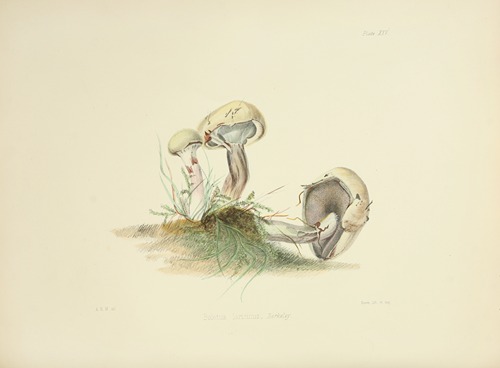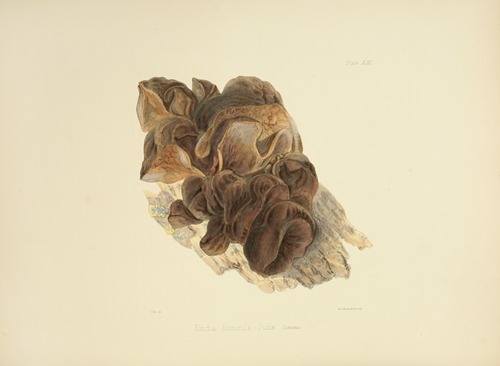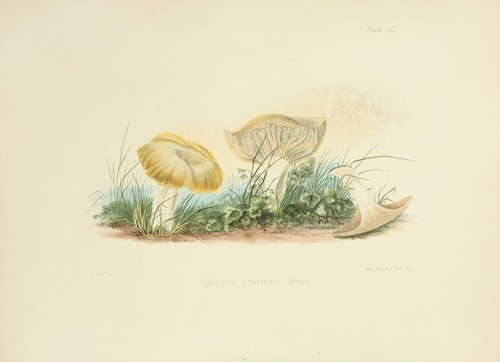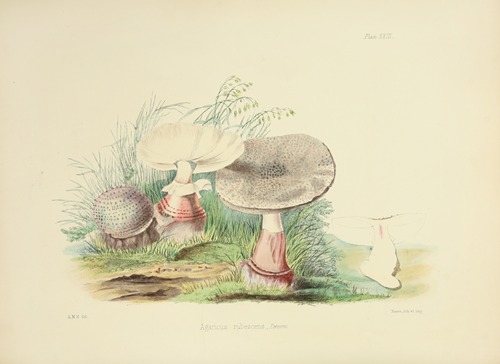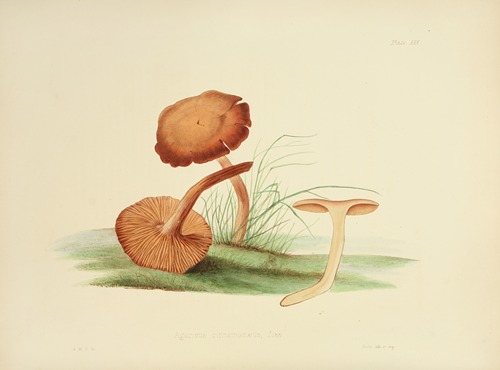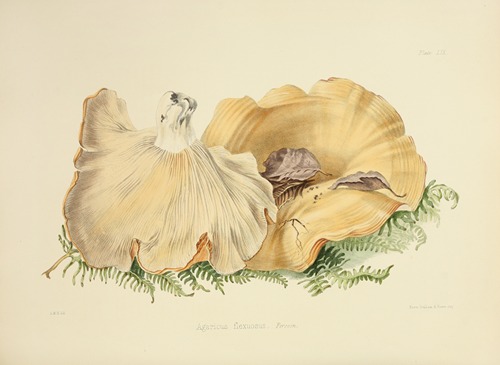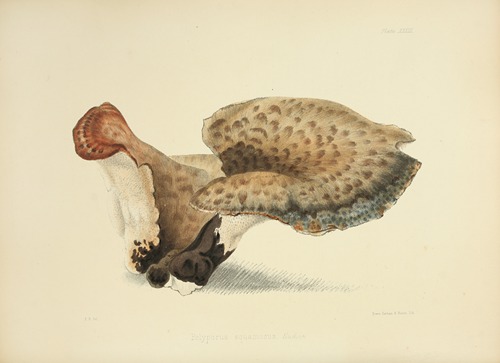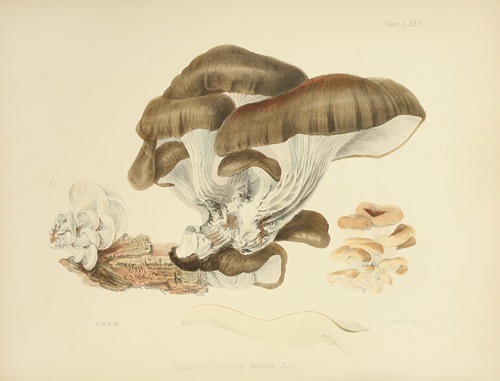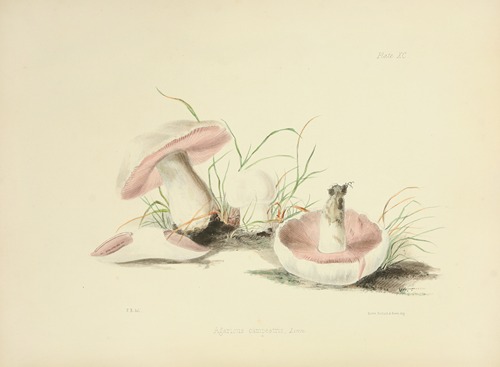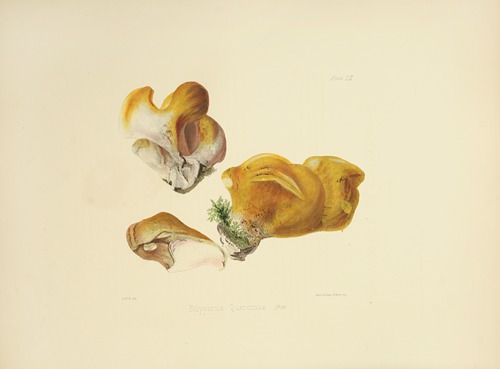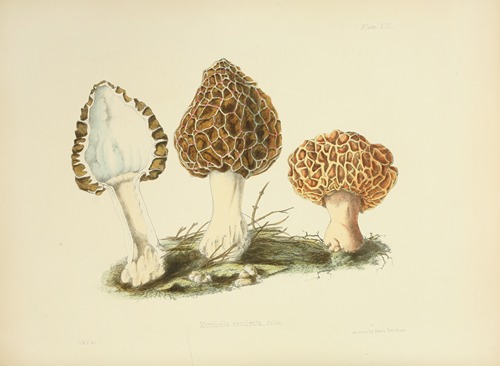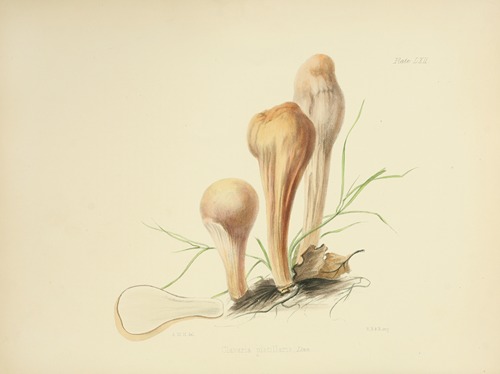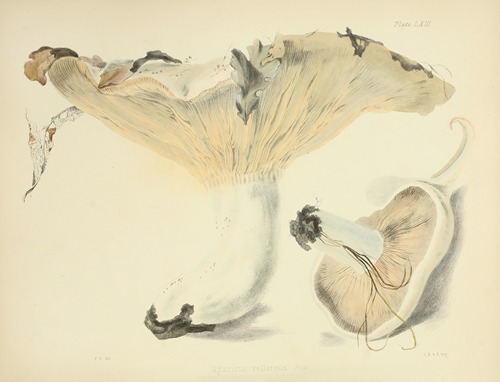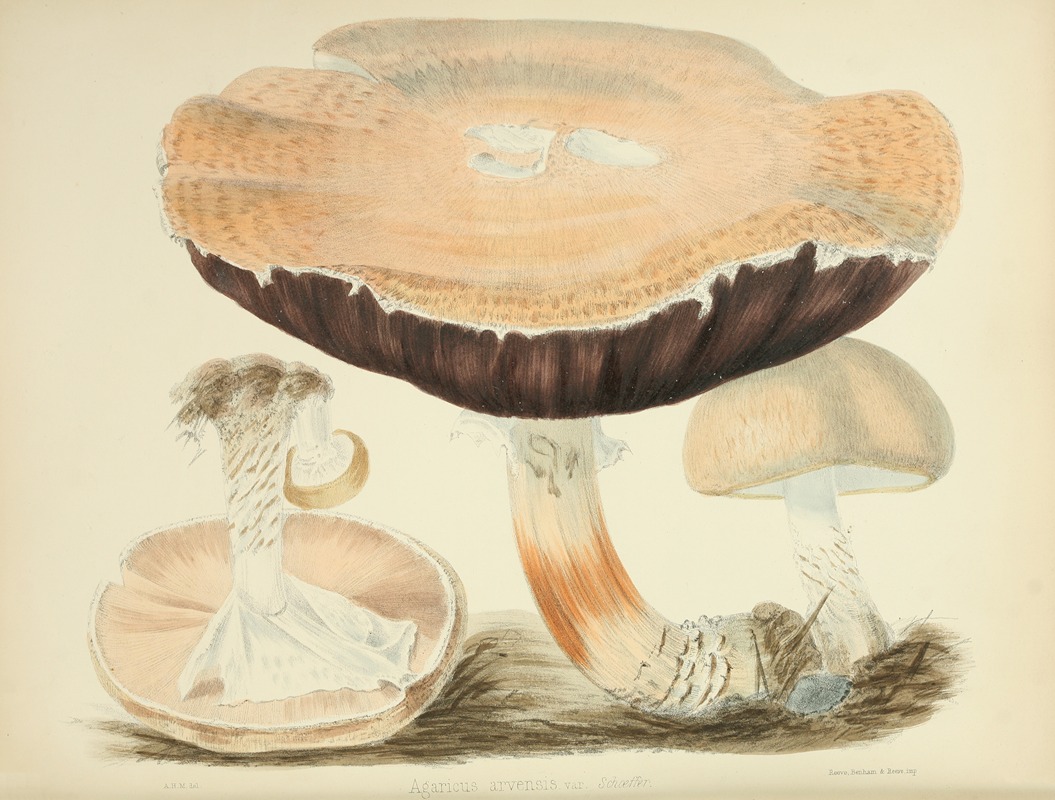
Anna Maria Hussey, née Reed was a British mycologist, writer, and illustrator.
Anna Maria Reed was born in Leckhampstead, Buckinghamshire, one of seven children of Rev. John Theodore Archibald Reed, rector of Leckhampstead, and Anna Maria Dayrell. We know little about Anna's childhood or education. Her father, a rector, probably encouraged an interest in science as part of her home schooling. There were plenty of books around the home, since Anna's father collected Bibles printed in various languages. Her sisters Henrietta (1807–60) and Frances (1810–72) stimulated an interest in botany and art, although Anna's diaries indicate that at first she was intrigued by geology.
In 1831, at 26, she married Rev. Dr Thomas John Hussey, rector of Hayes, Kent, who was a well-connected astronomer and scientist in his own right. They had six children, one of whom was also given the name Anna Maria Hussey. Only two survived to adulthood.
Hussey was a strong willed woman who approached her personal researches with an enthusiasm that she did not quite feel for her role as a clergyman's wife. She resisted when she was called upon by "every old woman in the parish" and she chafed at her husband's reminders of her duties.
During her most creative period, she maintained an active and candid correspondence with her mycological mentor, Reverend M. J. Berkley, which provides many details of her daily life and work. In his lifetime, Berkeley described over 6,000 new species of fungi. He assisted Hussey with identifications and she supplied him with specimens. She was also acquainted with Charles Badham, a scholar of classical literature, and mycologist M. C. Cooke, who cites Hussey in his 1875 Fungi: Their Nature and Uses and called her "friend".
In the 1840s, she contributed writings (possibly including a romantic serial) to The Surplice, a magazine edited by her husband. She also wrote at least one less romantic story, called 'Matrimony', for Frazer's Magazine – but all these pieces were anonymous, following the conventions of the time.
Anna Maria Hussey had an interest in natural history and knew Charles Darwin at nearby Down House. One of her brothers, George Varenne Reed, became tutor to Darwin's sons. Hussey (together with her younger sister, Frances Reed) developed an expertise in fungi, corresponding with and sending specimens to the leading mycologist of the day, Rev. Miles Joseph Berkeley. Hussey's approach to mycology came from the artistic end, rather than from the scientific fields of systematics, field work, or microscopy. She and her sister made watercolour paintings of some of the species they encountered and in 1847 a number of Hussey's illustrations were published as plates in A treatise on the esculent funguses of England by Charles David Badham. These went uncredited, however, as noted by a contemporary reviewer.
At the same time, she produced (as Mrs T. J. Hussey) the first volume of an ambitious and expensive work entitled Illustrations of British Mycology, containing 90 colour plates of species collected and illustrated by herself or by her sister, together with descriptions, personal observations, anecdotes, and comments. Illustrations of British mycology is not simply a taxonomic litany of fungi. It is instead a catalog of Anna's experiences with, and knowledge of, fungi. She hoped that her work would inspire future mushroom enthusiasts, especially young people. To that end, she provided instructions on hunting and caring for specimens caught in the countryside.
Berkeley named a fungal genus Husseia after "my friend, Mrs Hussey, whose talents well deserve such a distinction" (though the later Husseya J. Agardh, a genus of seaweeds named after Australian collector Jessie Hussey, has been conserved against it). Berkeley also named an agaric species, illustrated in volume two of Illustrations of British Mycology, Cortinarius reediae, after Frances Reed. Their specimens of fungi sent to Berkeley are now in the mycological herbarium at the Royal Botanic Gardens, Kew.
